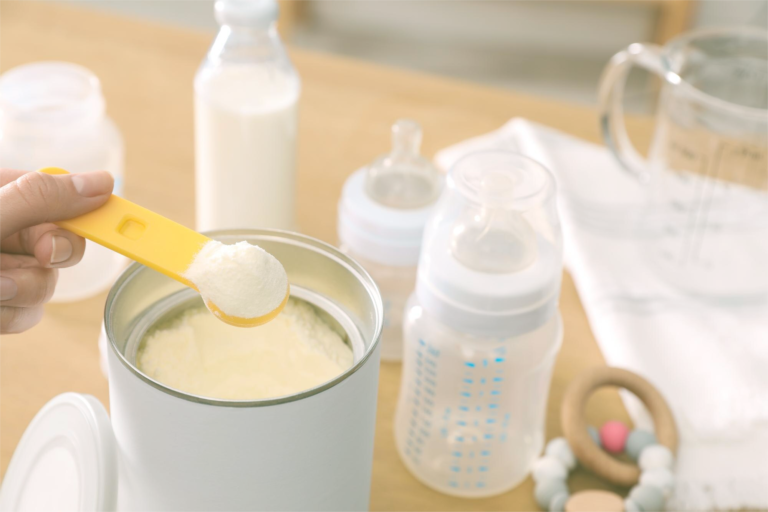Stepping into motherhood often brings joy intertwined with uncertainty. If you’re a first‑time mom wondering about the newborn feeding schedule, you’re not alone. This guide blends expert IAP advice with heartfelt encouragement – so you can navigate feeds, volumes, and those tender early days with confidence and compassion.
Embracing the Transition: Your Newborn Feeding Schedule Journey
Becoming “mom” reshapes your world and your identity, and feeding time can feel like the heartbeat of this change. In India, traditions such as giving ghutti (herbal water) or honey are common, but the Indian Academy of Pediatrics (IAP) stresses exclusive breast milk or formula for the first six months to protect your baby’s tender gut .
Feeding on demand empowers your little one to lead the way. While your body and heart adjust to a new rhythm, remember: each latch, each bottle moment, is a step toward building trust and bond. Give yourself permission to learn, to pause, and to ask for help—this is as much about nurturing you as it is about nourishing your baby.
Feeding on Demand: Frequency and Cues for Your Newborn
Newborns signal hunger long before they cry. By tuning into their early cues—rooting, lip‑smacking, hand‑to‑mouth movements—you can offer feeds before frustration sets in. Aim for 8–12 feeds in 24 hours, roughly every 2–3 hours, day and night:
- Early hunger cues:
- Sucking on fists
- Turning head toward your breast or bottle
- Smacking lips
- Late hunger cue:
- Crying (avoid this if possible)
Growth spurts—often around 2–3 weeks, 6 weeks, and 3 months—may spark cluster feeding, where your baby nurses every hour for several hours. This natural surge helps boost your milk supply or teaches you to prepare extra bottles if you’re formula feeding.
Night feeds are equally vital. In the first six weeks, if your newborn sleeps more than 4 hours, gently wake them for a feed to support healthy weight gain and milk production.
Understanding How Much: From Millilitres to Contented Smiles
Newborn stomachs are tiny—about 20–30 ml at birth—so small, frequent feeds are key. Formula‑feeding parents can follow these general guidelines from the American Academy of Pediatrics (AAP) adapted for feet‑on‑the‑ground Indian realities:
- First week: 30–60 ml per feed
- By one month: 90–120 ml per feed
- By six months: 180–240 ml per feed
Breastfed babies vary in volume but often mirror these patterns in millilitre‑equivalent intake. Instead of tracking exact amounts, look for these signs of a well‑fed baby:
- 6–8 wet nappies every 24 hours
- Steady weight gain on growth chart
- Contentment between feeds
Warning: Do not give water, honey, or goat’s milk before six months—these can cause infections or interfere with iron absorption.
Self‑Care and Support: The Hidden Ingredient
Amid the cycle of feeds, diaper changes, and snuggles, it’s easy to lose yourself. The period of postpartum adjustment can stir feelings of identity crisis, exhaustion, and self‑doubt – emotions that deserve compassion and support.
- Rest when you can: Accept help from family or hire support for chores.
- Stay nourished: Aim for 2–3 litres of water and balanced meals—dal, sabzi, chapati, and seasonal fruits.
- Connect with peers: Local mother’s groups or online forums provide solidarity and practical tips.
- Seek professional help: If feelings of sadness or overwhelm linger beyond two weeks, talk to your doctor about postpartum depression.
You’re not just feeding a baby; you’re rebuilding your identity. Self‑care is not selfish – it’s essential for your well‑being and for nurturing your little one.
Conclusion
Crafting a loving newborn feeding schedule India means responding to cues, offering the right volumes, and honoring your own postpartum journey. Trust the IAP guidelines, listen to your baby – and to yourself – and remember that this shared rhythm of feeds and rests forms the heart of early motherhood.
For personalized guidance, book an appointment with a Paloma Care doctor today and get expert support for newborn care.
References:
- https://iapindia.org/pdf/Infant-and-Young-Child-Feeding-Guidelines-2016.pdf
- Feeding your newborn: Tips for new parents – Mayo Clinic
- Amount and Schedule of Baby Formula Feedings – HealthyChildren.org
- Neonatal stomach volume and physiology suggest feeding at 1-h intervals – PubMed



